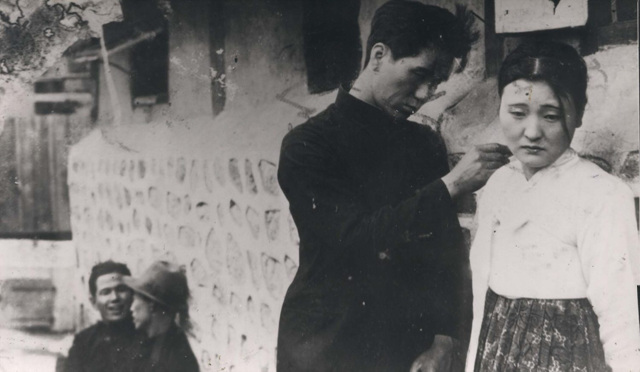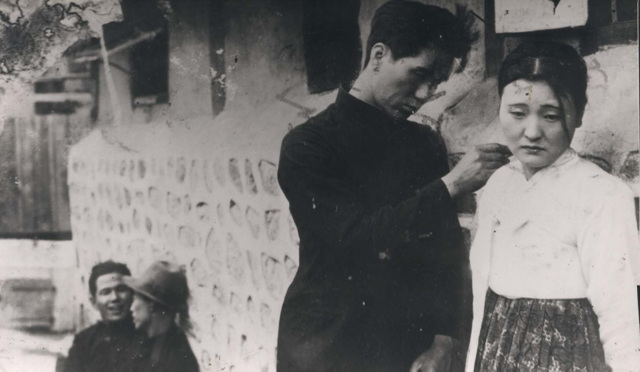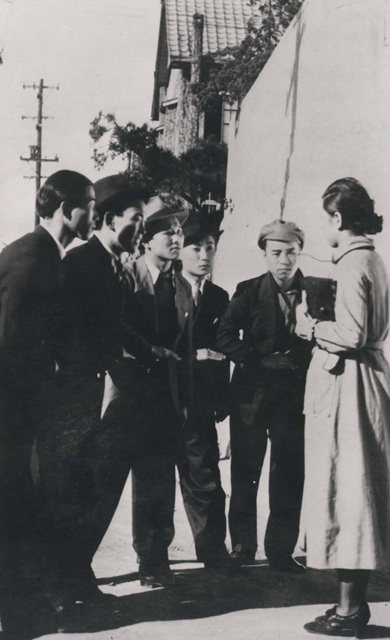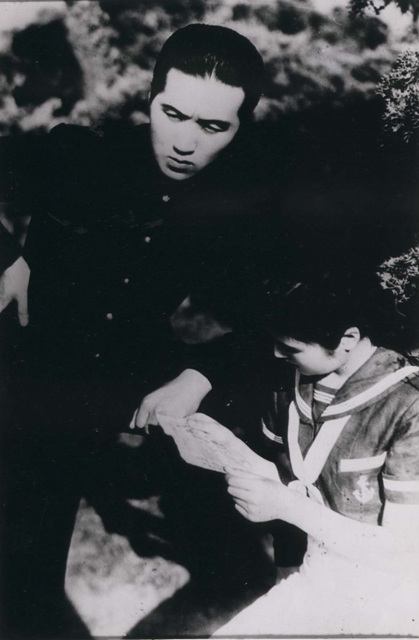13th(2011)
Turning Point of the Youngsters
AHN Jong-hwa
- Korea
- 1934
- 70min
- 35mm
- black and white
- 드라마
SYNOPSIS
Synopsis
Yeong-bok married into Bong-seon’s family and worked for 7 years. But when Myeong-gu snatches Bong-seon away, he decides to leave town. Yeong-ok, his younger sister, also leaves home to come up to Seoul after their mother passes away but she cannot find her brother. Yeong-ok loses her virginity to Myeong-gu’s friend and, he gives them a good beating.
Program Note
A director AHN Jong-hwa‘s work in 1934, Turning point of the youngsters is the oldest Korean film that exist and it is the only film that contains the real life scenes of Kyungsung (Seoul) in 1930s along with Sweet Dream (1936). Summed up in one sentence ”I am going to depart” in the movie Sweet Dream infuses a sense of reality in 1930s‘ Kyungsung. The townscapes in Turning point of the youngsters transfigure the times that we know by phrases into vivid places where people live, with images of the train entering vigorously into the Kyungsung train station, the streets with full of cars, couples dating on the banks of the Han-gang, the golf tournaments accompanied with caddies, gasoline girl working at a gas station, a fancy café, and a restaurant that has an elevator. All these visual spectacles were possible due to the special nature of the cinema. This film portrays two groups of characters in order to show the light and the dark sides of the city. There are poor but earnest Yeong-bok and his girlfriend Yeong-hee. There is Yeong-ok who came to Kyungsung to seek her brother but became a waitress in the café on one side, and on the other side there is the libertine Gae-cheol who cajoles with Yeong-ok and exerts his evil influence on Yeong-hee, and then there is Myeong-goo who snatches Yeong-bok‘s fiancé. Like many popular narratives at that time, this film contrasts between earnest Yeong-bok and libertine Gae-cheol as symbols of the country and the city, or poverty and wealth. The film emphasizes inhumanness and unethical quality of the city by maximizing the theme of a libertine and a cajoled woman. Attractive but cruel city and the tragic love story of a naive virgin from the country were the important structure of popular narrative in those days, and was a popular theme applied over and over again. Also, the capture of Yeong-ok‘s smoking figure with the camera is a metaphor for, men‘s indecent gazes or ambivalent gazes of the society towards women walking across the evolving city. This is a theme which films have applied consistently since then. (LEE Gil-sung)
PROGRAM NOTE
Synopsis
Yeong-bok married into Bong-seon’s family and worked for 7 years. But when Myeong-gu snatches Bong-seon away, he decides to leave town. Yeong-ok, his younger sister, also leaves home to come up to Seoul after their mother passes away but she cannot find her brother. Yeong-ok loses her virginity to Myeong-gu’s friend and, he gives them a good beating.
Program Note
A director AHN Jong-hwa‘s work in 1934, Turning point of the youngsters is the oldest Korean film that exist and it is the only film that contains the real life scenes of Kyungsung (Seoul) in 1930s along with Sweet Dream (1936). Summed up in one sentence ”I am going to depart” in the movie Sweet Dream infuses a sense of reality in 1930s‘ Kyungsung. The townscapes in Turning point of the youngsters transfigure the times that we know by phrases into vivid places where people live, with images of the train entering vigorously into the Kyungsung train station, the streets with full of cars, couples dating on the banks of the Han-gang, the golf tournaments accompanied with caddies, gasoline girl working at a gas station, a fancy café, and a restaurant that has an elevator. All these visual spectacles were possible due to the special nature of the cinema. This film portrays two groups of characters in order to show the light and the dark sides of the city. There are poor but earnest Yeong-bok and his girlfriend Yeong-hee. There is Yeong-ok who came to Kyungsung to seek her brother but became a waitress in the café on one side, and on the other side there is the libertine Gae-cheol who cajoles with Yeong-ok and exerts his evil influence on Yeong-hee, and then there is Myeong-goo who snatches Yeong-bok‘s fiancé. Like many popular narratives at that time, this film contrasts between earnest Yeong-bok and libertine Gae-cheol as symbols of the country and the city, or poverty and wealth. The film emphasizes inhumanness and unethical quality of the city by maximizing the theme of a libertine and a cajoled woman. Attractive but cruel city and the tragic love story of a naive virgin from the country were the important structure of popular narrative in those days, and was a popular theme applied over and over again. Also, the capture of Yeong-ok‘s smoking figure with the camera is a metaphor for, men‘s indecent gazes or ambivalent gazes of the society towards women walking across the evolving city. This is a theme which films have applied consistently since then. (LEE Gil-sung)
Director
-
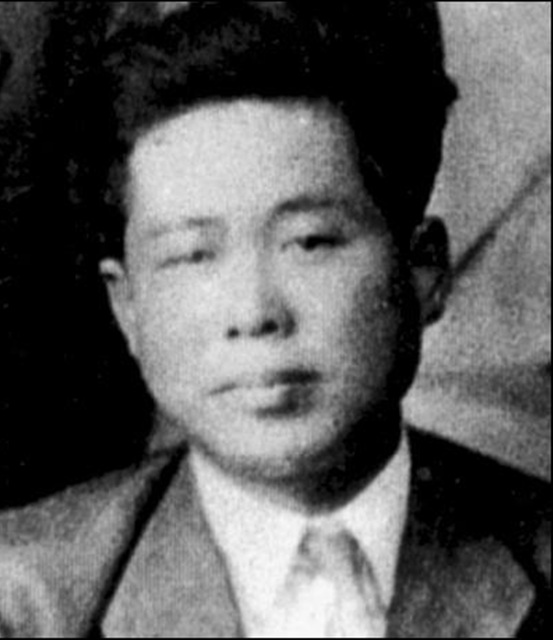
AHN Jong-hwaAHN Jong-hwa
Born in 1902. AHN Jong-hwa was a member of To-wol Association and Performing Arts Institute, both of which were organized by Korean study abroad students in Tokyo. He also participated in theatrical reform movements. AHN joins Cho Sun Kinema Corporation in 1924 since when he became a part of film industry. He took part as actor in The Story of Woon-yeong (1925) directed by YUN Baek-nam and Ahm Gwang (1925) directed by WANG Pil-ryeol. He directed 13 works until he passed away in 1966.
Credit
- ProducerLEE Hyeong-won
- Cast LEE Won-yong, SIN Il-seon, PARK Ho
- Screenwriter AHN Jong-hwa
- Cinematography LEE Myeong-u
- Editor AHN Jong-hwa

